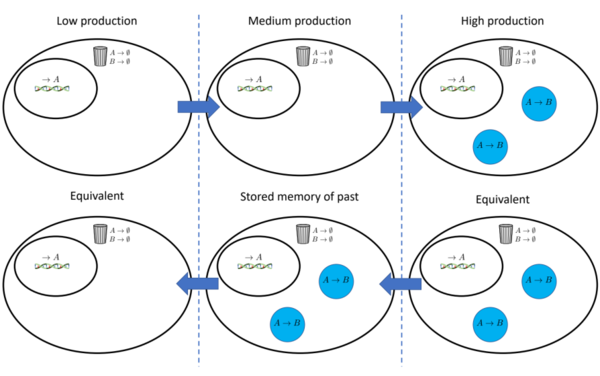Mechanisms for storing memory in cellular droplets
Methods: statistical physics, 3D reaction diffusion models, critical behavior around bifurcations
Biomolecular condensates are a newly defined class of organelle in the cell. In contrast to the classical picture of a cellular organelle, there is no membrane separating the inside from outside. Instead, they form through the physics of proteins phase separating into droplets similar to oil demixing from water. One of their primary functions is expected to be as reaction chambers where enzymes and substrates are localized into volumes separated from the rest of the cell. One advantage to using droplets over membrane-bound organelles is their ease of assembly and disassembly. When no longer needed the cells can dissolve the droplets.
In this project we will build a minimal model for how cells could have a controlled hysteresis in droplet formation. In short, whether droplets are thermodynamically stable is dependent on if droplets already exist. This can be described as a way for cells to store memory of previous events or conditions to analyze later. This will be accomplished by choosing chemical reactions that create positive feedbacks. One such possible feedback is an enzyme that converts the droplet material from a weakly phase separating state into a strongly phase separating state. In this way, once a droplet forms, energy is expended making it even more stable. This project will be focused on exploring the different mechanisms that cells could be using to produce hysteresis. The larger scale view of where this project fits into is a general study to build a library of all the ways chemical reactions could be used in collaboration with droplets to impact cell function and signaling.

The key tasks for the project are
- Finding hysteresis loops in non-linear differential equation systems for droplets with chemical reactions.
- Studying numerically under what conditions they form.
- Finding limiting cases where we can estimate their onset.
- Extrapolating these results to different types of chemical feedbacks.
Key words: Cell signaling, biomolecular condensates, reaction diffusion, active matter
References:

